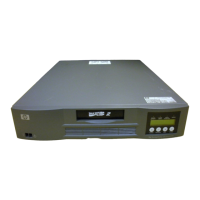Step 5. List and create Fibre Channel zoning
For a Fibre Channel SAN, create a list of fabric zones that contain the WWPN associated with servers,
storage arrays (source and destination) and MPX200, as shown in Table 41. The destination array
should be zoned in only with the MPX200 before migration. After migration, the destination arrays
should be zoned in with servers, as shown in Table 42.
Table 41 Pre-migration Fibre Channel zoning information
Server, MPX200, storage
name
Zone members
(WWPNs)
FC zone nameFC switch and
nl
IP Address
Table 42 Post-migration Fibre Channel zoning information
Server, MPX200, storage
name
Zone members
(WWPNs)
FC zone nameFC switch and
nl
IP Address
Performance and downtime
This section provides recommendations designed to improve performance and minimize downtime
during data migration.
Optimizing performance during data migration
The MPX200 detects the multiple paths of a specified LUN and performs load balancing using active
optimized paths. To get the best performance, HP highly recommends that LUNs for the source array
and destination array are balanced across both controllers. One set of LUNs shows active optimized
paths on one controller, while another set of LUNs shows active optimized paths on a different
controller.
Where high availability (HA) configuration as redundant SAN is deployed, HP highly recommends
the following:
• Connect one Fibre Channel port from the MPX200 blade to one SAN, and connect the other port
to the redundant SAN.
• Connect Fibre Channel ports from the destination array to both SANs.
• Maximize array performance by simultaneously running four to eight active jobs on a single array.
The MPX200 can perform up to 32 active migrations jobs (255 configured) per array.
• For migration jobs that run simultaneously, balance the LUNs across two controllers.
MPX200 Multifunction Router 373
